From Gucci’s virtual sneakers to the IKEA Studio app, augmented reality (AR) is quickly changing how companies do business. Whether it’s making employees’ jobs easier or enhancing the customer experience, AR is altering the way businesses interact in the digital world.
According to an article by Joe McKendrick for Forbes, 51% of business people who utilize AI say that cost-reduction is the area where it is “delivering first.” But that doesn’t mean AR is only helpful in reducing costs. Among other things, AR can be used as a tool to push sales and improve brand value through mobile devices.
AR can even aid in every step of the sales process — before, during, and after. Most notably, AR can be used as a marketing tool for garnering attention and intrigue in a brand. Here we’ll give you a brief introduction to AR — what it is and how to use it in your next marketing campaign.
What is Augmented Reality?
Augmented reality is a digital technology that superimposes information in video, text, or image form onto everyday objects in the real world. Usually, a smartphone, tablet, or headset is used to experience the physical environment through AR. AR equips marketers with the ability to convert a static object into an immersive 3D experience.
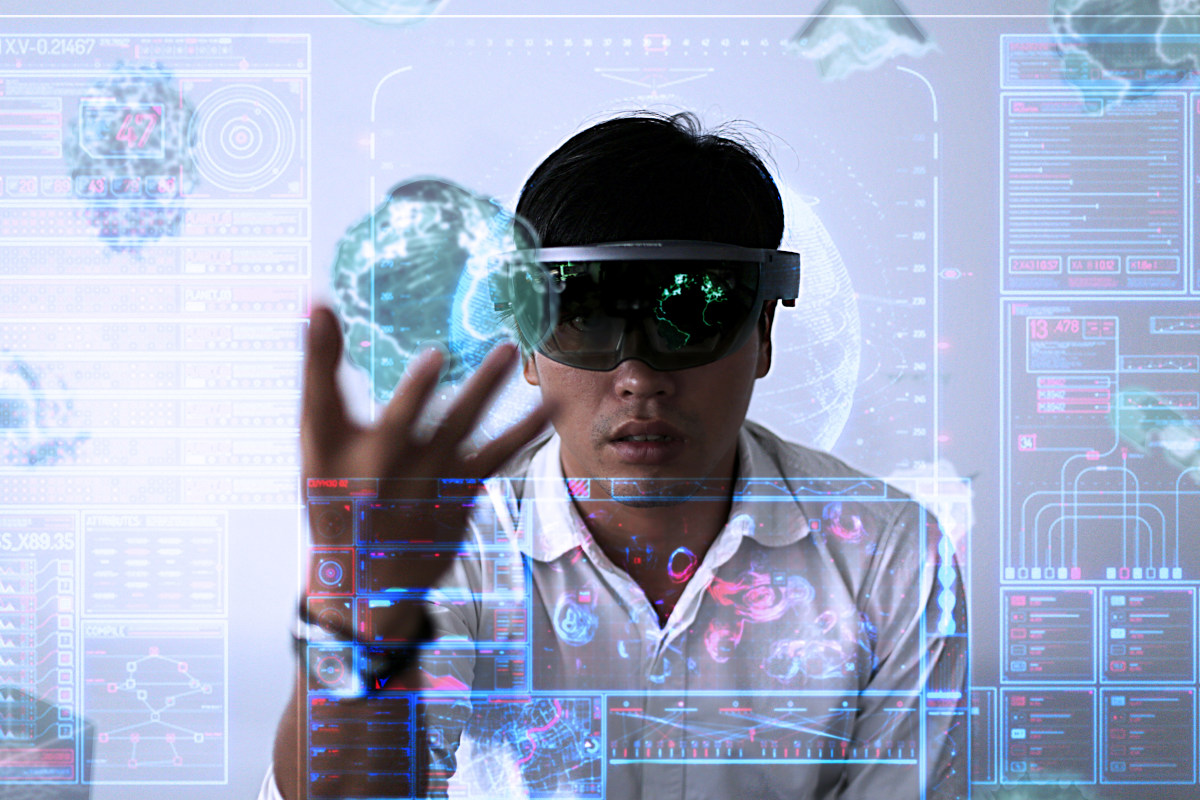
Augmented reality is often confused with artificial intelligence or virtual reality, but these are all distinct technologies. There are three basic elements of augmented reality. For a technology to be AR, it must have:
- A source of data
- Data presentation
- Interaction between the data and the physical world
The source of data is a sensory input (visual, auditory, etc.) captured through tools like sensors or cameras.
The presentation of data is the overlaid information collected by the source of data. The presentation of this information refers to some sort of projection of the physical world.
The interaction between the data and the environment refers to how we use the resulting data from the combination of augments and reality.
There are two variants of AR technology currently in use:
- Marker-based AR
- Markerless AR
In both types of AR, there must be a trigger that initiates AR overlay.
Marker-based AR uses a 2D marker, such as a QR code and barcode, or watermark. When the user points a device at one of these markers, it acts as the trigger for AR.
Markerless AR can use any part of the real world, such as an image or location, as the trigger. For example, GPS information can be used to trigger AR when the device is in a specific geographical location and placed at a specific altitude.
When a user browses an AR trigger using their device, the AR app will seek out models of images or video to display over the view from the device’s camera. As the person moves the device around, the AR overlay will move along with it, enabling the user to see the projected information from various angles.
How to Use AR for Your Lead Generation
As you can see in the above graph, handheld devices are quickly becoming one of the most prominent ways consumers communicate with brands. Using augmented reality, businesses can supply customers with unique experiences in the palm of their hands. This, in turn, helps businesses enhance brand value and awareness while driving sales.
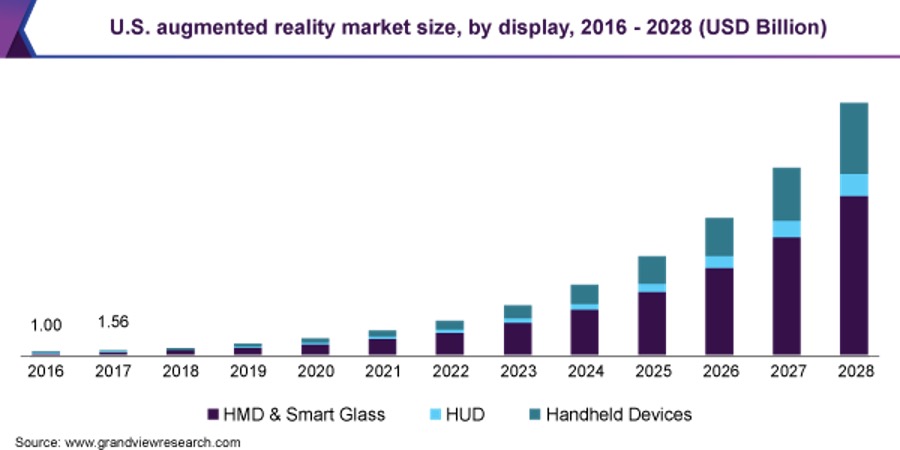
To that end, AR can be a valuable tool in your marketing strategy toolbox. Here are just some of the things AR can do:
Let Customers Try Before They Buy
Consumers always want to test products before they purchase them. This method has been proven to elevate sales from fitting rooms and cosmetic samples to automobile test drives. Potential customers can model and try out makeup, clothing, and a broad spectrum of home-related products without interacting with them physically. Ultimately, this boosts buyer confidence when purchasing online.
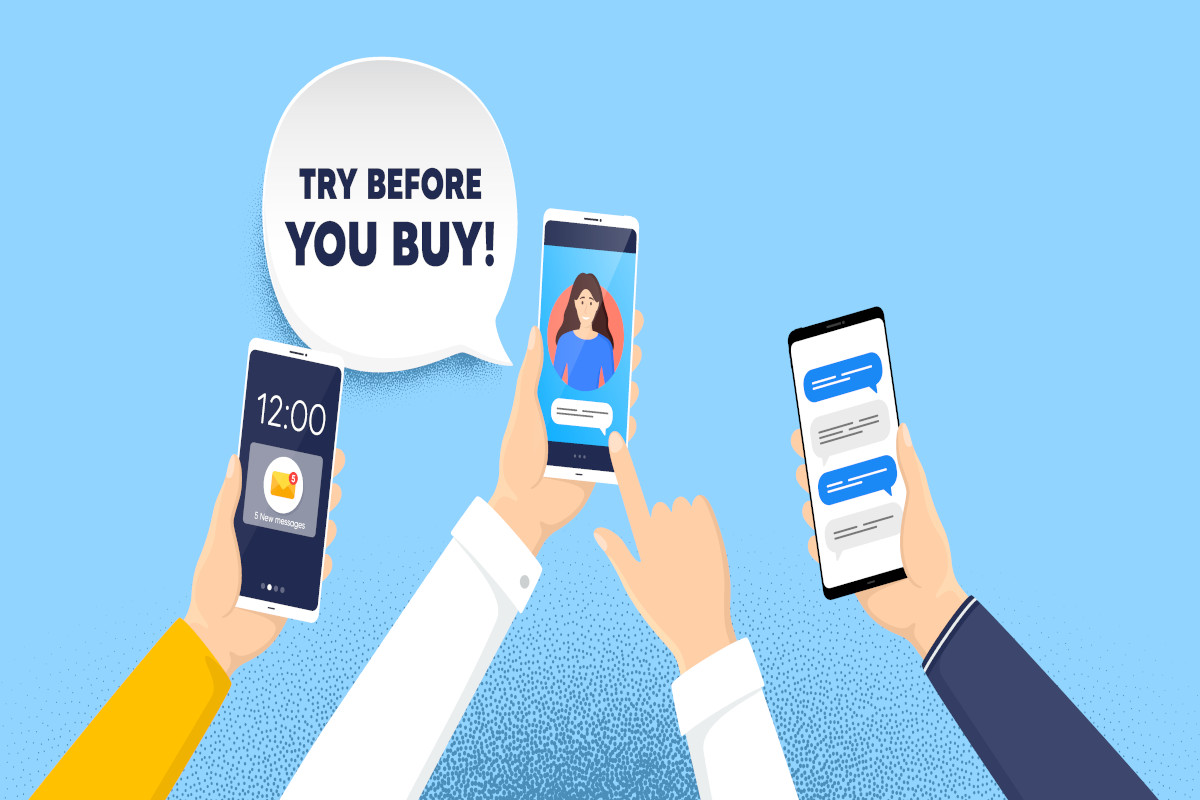
Facebook is one company that has embraced AR’s try-before-you-buy feature. The digital giant supports augmented reality, which lets users sample makeup and accessories with the aid of their device’s camera. Brands in the cosmetic industry, like Sephora and L’Oreal, have also taken advantage of this technology.
Fast-Track the Sales Cycle
AR is useful in streamlining the sales process from beginning to end. Adobe reports that 38% of B2B buyers claim that AR can fast-track the buying process. This is because the sales process goes a lot quicker when customer doubt is removed. If the customer can interact directly with a product in their own environment, they know what to expect. This can remove concerns the customer might have about how the product looks, feels or operates. Once the customers’ worries are quelled, the customer can buy with confidence, thereby speeding up the process of finding a product to making a purchasing decision.
Provide Better Customer Service
Customer service is a huge selling point in all industries, and well-trained representatives are key to a good customer experience. Consumers want to know that you have their back and are there to provide support even after the sale.
AR can make training more active and effective. AR models can replicate a real product to help train your staff quicker. This is especially helpful for remote workers who cannot physically interact with your customers or the product.
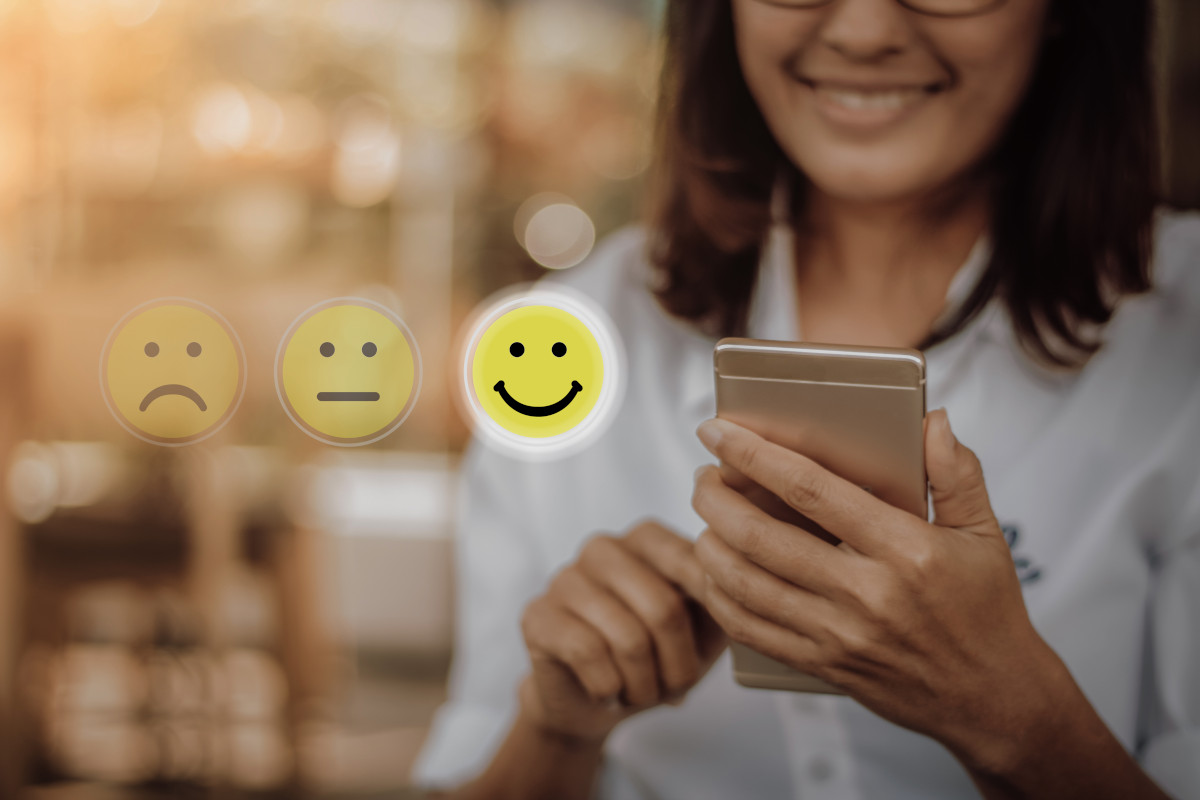
For example, Mercedes owners can access a feature called Ask Mercedes, which matches an AI assistant with an augmented reality interface to answer a multitude of questions.
Boasting a convenient and advanced form of customer support is a great way to market yourself as a customer-first brand–hopefully landing you some new fans in the process.
Add Value With Interactive Packaging and Marketing Materials
The modern consumer wants an experience and personal connection with a brand. So why not build an AR experience your customers will remember long after they’ve put their phones away?
Jack Daniels did just that with a campaign wherein customers could scan the label on a whiskey bottle to experience dynamic storytelling centered around the brand.
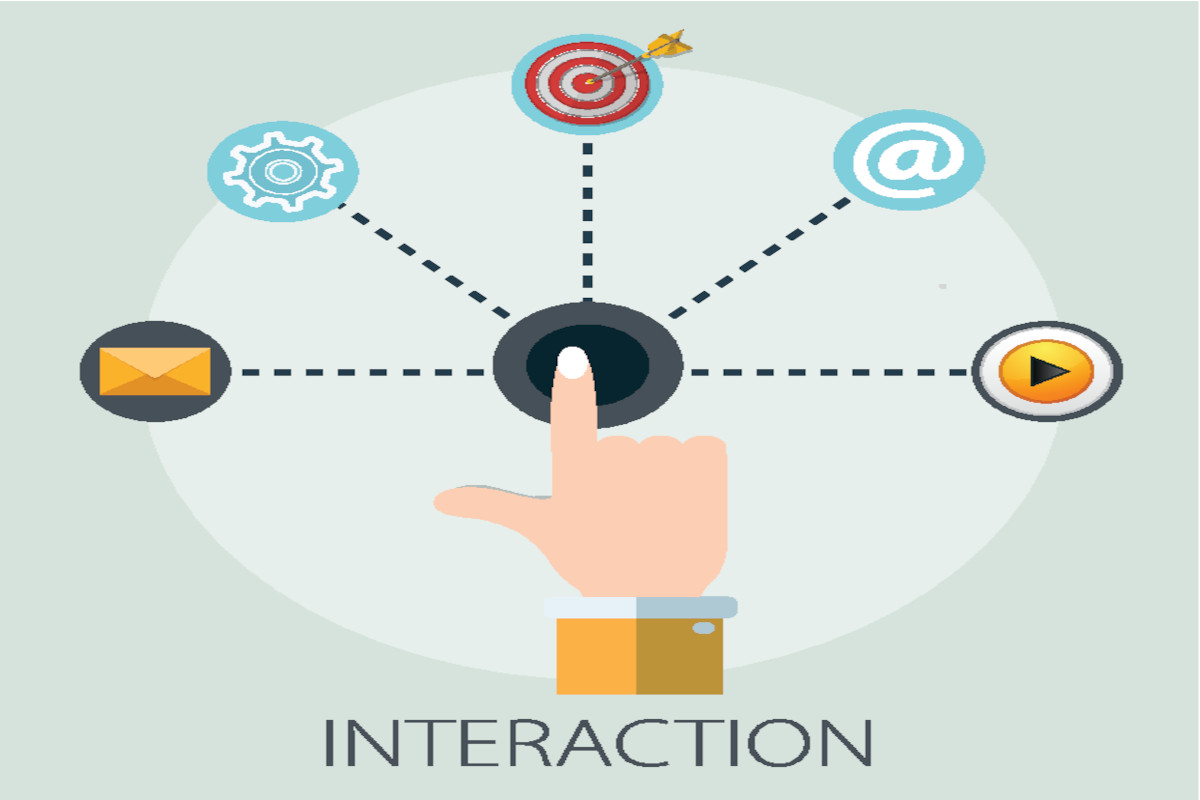
Customers can scan product packaging and marketing materials like posters, brochures, or even digital media to unlock a rich AR experience with a simple point-and-click. For instance, customers can scan the QR code on a CD they bought to view exclusive content like holographic music videos and behind-the-scenes footage. Or, a company’s pamphlet can be scanned to reveal company news and updates. This will almost certainly catch the consumer’s attention more than the written word alone.
Generate Buzz Around Your Brand
Augmented reality can be a great tool to incorporate into your buzz marketing strategy. If nothing else, AR is just plain fun, meaning that a well-designed AR experience will get people talking. And if the success of Pokemon GO is any indication of consumer preferences, your customers will love any excuse to use AR.

For example, Pepsi’s 2014 campaign at bus stops around London gave riders an exciting experience while they waited for the bus. At stops throughout the city, walls with cameras projected AR images of tigers, UFOs, and robots mingling with passersby in real time. By transforming an ordinary, monotonous experience into something extraordinary, Pepsi generated a lot of buzz about its brand. They got people excited about interacting with their products and eager to try out the experience for themselves.
Sealing the Deal
The augmented reality marketing campaigns make sure the customer crosses the finish line. Remember, you are trying to generate a lead here. That means including a clear call to action asking the customer to enter their information.

The Impact of AR Lead Generation on Lead Distribution
Part of lead generation involves creating and distributing content to bring in potential customers. The content can vary from a simple news or blog article to a well-curated email, high-quality video, or poster. Using AR and VR in your marketing campaigns can increase brand awareness and website traffic at unparalleled rates.
Picture a funnel. At the widest part is your audience — all the consumers you reach through your marketing campaigns, who come to you by word of mouth, or who are, at the very least, aware of your company’s existence. As your audience travels down the funnel, it narrows. The consumers who reach the other side of the funnel are those who you have successfully converted into customers. As any marketing strategist knows, only a select few members of your audience will convert to sales. Therefore, by expanding your pool of potential customers, you can reach more people and increase your conversion rate.
Using the funnel as a metaphor for your sales channel, we can see why lead generation is crucial — it sets the stage for future sales. Your marketing team should be able to curate content for a wider target audience and be well-versed in separating the leads to narrow down further the content, products, and services marketed to them.
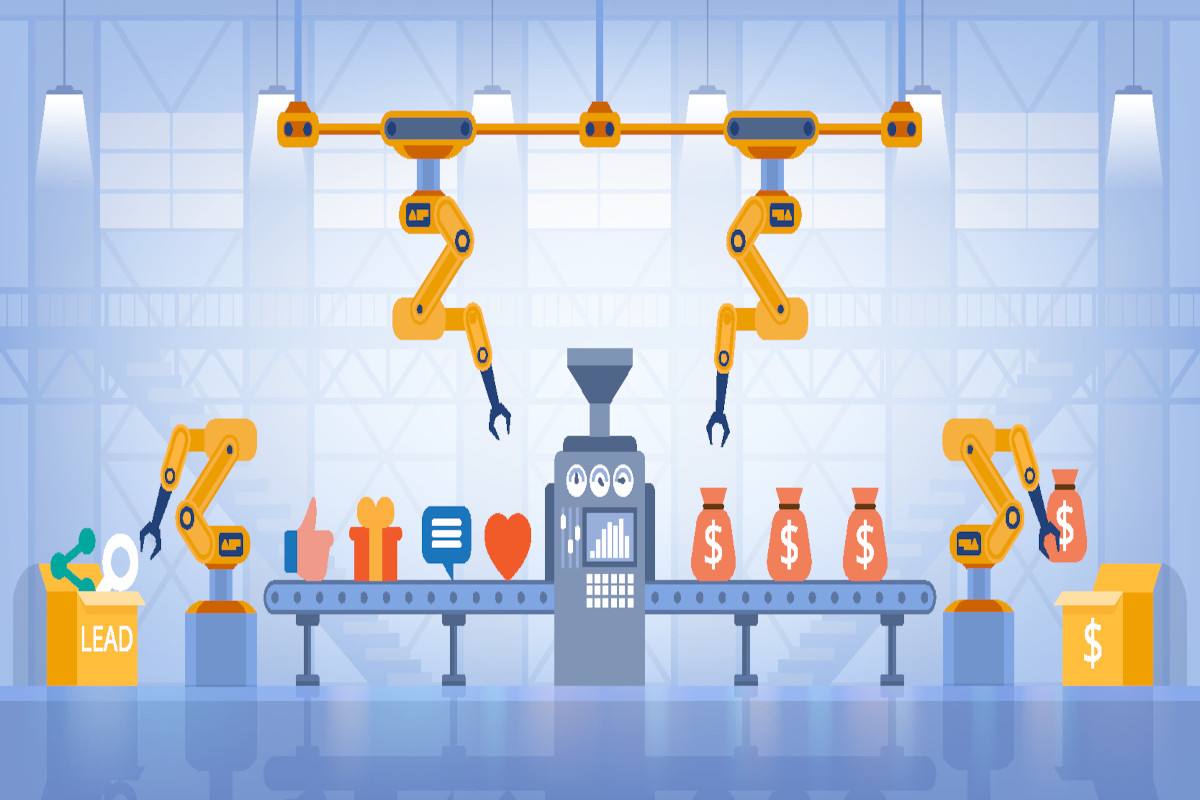
AR enhances the sales funnel by expanding the scope of your brand’s presence (thus, the potential customer pool), which inevitably progresses to more lead conversion. And, it does this in a way that is quicker for you and more exciting for the consumer.
One of the most significant sectors in which AR can enhance B2B sales is in building dynamic sales presentation material. The old sales pitch method involved brochures and maybe a PowerPoint presentation. Compare that with a salesforce armed with a digital device that lets buyers access AR applications tailored to their needs. In a B2B context, that might look like a 360-degree view of a product line or visualizations that can predict the outcomes of particular decisions.
7 Businesses that Must Use AR for Lead Generation
As we’ve explored, AR has lots of uses across a wide range of fields and industries. Any industry can use AR for indirect sales or marketing purposes as well. Listed below are seven industries that can most benefit from the use of augmented reality:
- E-Commerce: product visualizations, try before you buy, more buyer confidence
- Automotive: customer service, repairs, troubleshooting
- Fashion: virtual fitting rooms
- Gaming: product demos
- Hospitality and Tourism: restaurant ratings, maps, information about landmarks
- Higher Education: college tours

We should mention that AR doesn’t work for everyone. There are some industries out there that don’t have a practical avenue for AR implementation. If your customer base shies away from technology, for instance, then it might be more trouble than it’s worth to launch an AR lead generation campaign. For everyone else, we hope these tips get you started in the right direction.



